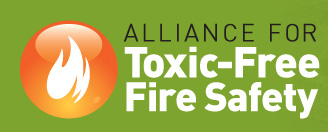  |
|||
November 20, 2013 Toxic Flame Retardant Chemicals in Children’ Furniture New report shows that toddler products with famous characters contain harmful chemicals (New York) Children’s chairs, couches and other kids’ furniture purchased from Walmart, Target, Kmart, Toys” R” Us/Babies “R” Us, buybuy Baby and other major retailers throughout the U.S. and Canada were tested and found to have harmful toxic flame retardant chemicals linked to infertility, thyroid disease, cancer, other serious health problems. Modern studies show that they do not provide fire safety benefits in furniture and make fires more toxic and dangerous with soot and smoke. The Getting Ready for Baby Campaign is calling upon Babies”R”Us and buybuy BABY to require product suppliers to disclose their use of a list of chemicals known as the “hazardous 100+,” as designated by the Mind the Store Campaign, which targets the nation’s top 10 retailers. Product makers are allowed to use toxic chemicals in infant and toddler products because there is no law that bans the practice. The Toxic Substance Control Act of 1976 (TSCA) is a monumental failure, and needs to be modernized and strengthened. However, the recently-introduced Chemical Safety Improvement Act is not an improvement over TSCA. “I had a P’Kolino Little Reader chair tested that I thought my two year old grandson would love,” says Kathy Curtis, LPN, from Clean and Healthy New York and coordinator of the Alliance for Toxic Free Fire Safety. ”The testing done by Center for Environmental Health showed both Firemaster 550 and TDCPP. Retailers should be more careful about the products they sell.” “A Spiderman chair from Walmart was tested and it has Firemaster 550 in it,” says Maricarmen Cruz-Guilloty, Environmental Health and Justice Coordinator from Alaska Community Action on Toxics. “Arctic Indigenous peoples already carry a high burden of many of the other toxic flame retardants in their bodies. Exposure to these chemicals are linked with thyroid disease, learning and developmental disorders, reproductive problems, and certain cancers. We also have the highest rates of birth defects in the nation up here. Our children should not be exposed to these chemicals.” Elizabeth Crowe, executive director of the Kentucky Environmental Foundation says, “Two couches from Kentucky, from Wal Mart and Target, tested positive for toxic flame retardants. These small couches present big problems: should kids play on them? How could we safely reuse or dispose of them? Why was this toxic product allowed to be manufactured in the first place? Kentucky parents want answers, and we need our legislators to take seriously the need for federal chemical reforms.” Jamie McConnell, Director of Programs and Policy with Women’s Voices for the Earth concurs,”It makes no sense that we cannot trust a product made for children. We’ve been working to try and get chemical regulatory reform to stop toxic chemicals in products.” “Shame on Disney for selling children’s Princess, Mickey Mouse and Minnie Mouse chairs containing toxic flame retardants,” said Mike Schade, Markets Campaign Coordinator with the Center for Health, Environment & Justice (CHEJ). “Parents should be able to trust that Disney products are safe, not toxic. We shouldn’t have to worry about our little princes and princess being exposed to poisonous chemicals. It’s time for Disney to make our dreams come true and eliminate these unnecessary dangerous chemicals. “ For more info: Alliance for Toxic Free Fire Safety Available for Interviews Kathy Curtis, LPN, National Coordinator of Alliance for Toxic Free Fire Safety, clean.kathy@gmail.com, 518.708.3922. Ms. Curtis can explain how federal chemical regulation has failed to address the problem of halogenated flame retardant chemicals, and how states are stepping up across the nation to restrict the chemicals in the absence of federal action. Kathy has been involved in efforts to restrict chlorinated Tris in New York State. Elizabeth Crowe, Director, Kentucky Environmental Foundation, 859.986.0868, elizabeth@kyenvironmentalfoundation.org. Elizabeth can provide reporters access to participants in the couch study from Kentucky. Judy Levin, MSW, Pollution Prevention Co-Director, Center for Environmental Health, judy@cehca.org; 510.655.3900 x316, cell: 510.697.3947. Judy can address the details of the report and California regulatory and policy issues. Jamie McConnell, Director of Programs and Policy, Women's Voices for the Earth, jamies@womensvoices.org, 406.543.3747. Jamie can address how regulatory failure has contributed to toxic chemicals in products we use every day. Maricarmen Cruz-Guilloty, Environmental Health and Justice Coordinator and Pamela K. Miller, Executive Director, Alaska Community Action on Toxics (ACAT) pamela@akaction.org (cell 907.242-9991), 907.222.7714 (office), and Vi Waghiyi, Alaska Community Action on Toxics, (cell 907.444.9194). Pam and Vi can address how unregulated persistent, bioaccumulative and toxic chemicals drift North and disproportionately impact indigenous Arctic people. Background Center for Environmental Health (CEH) purchased 42 items of children’s furniture with help from groups in from 13 states and Canada. Duke University researcher Heather Stapleton, PhD conducted the laboratory analysis. Dr. Stapleton, a renowned research scientist in the realm of toxic flame retardants in consumer products. Dr. Stapleton’s analysis found four flame retardant chemicals (including two chemicals that are mixtures of various flame retardants) in 38 of 42 products tested. Two products contained more than one chemical. The chemicals found included a compound called Firemaster 550 (found in 22 items) linked to obesity and disruption of the bodies’ natural hormone functioning. TCPP (Tris, 15 items): animal studies have linked exposure to TCPP to genetic damage and reproductive health change. TDCPP (chlorinated Tris, 2 items) is identified as a chemical known to cause cancer by the state of California and the National Research Council. Studies have also linked exposures to genetic damage, effects on fertility and natural hormones, and damage to developing embryos. Health concerns forced companies to remove TDCPP from children’s pajamas in the 1970’s yet it is still widely used today in furniture and other products. Butylated Triphenyl Phosphate (1 item): According to the EPA, health concerns associated with exposures to Butylated Triphenyl Phosphate, a mixture of four chemicals, include decreased fertility and abnormal menstrual cycles.
|
|||




